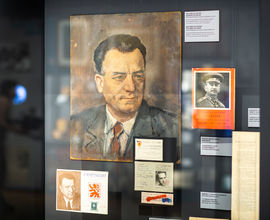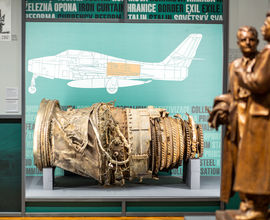The 1950s exhibition represents a decade of Czechoslovak history, the symbols of which were persecution and political trials behind the Iron Curtain, but also faith in a better world, which was built at the cost of lack of freedom and crimes, in a country decimated by totalitarianism and controlled by a party apparatus.
The 1950s are one of the darkest periods in our modern history. A period of political trials, judicial murders, lawlessness and the liquidation of democratic principles of state administration, for which the ruling Communist Party of Czechoslovakia is responsible. The totalitarian regime affected all areas of the social structure of Czechoslovakia, including the economy, culture, politics and foreign anchoring of the country. In this period, the future character of our society was set and distorted for many decades.
The exhibition presents the broader context of the 1950s, when the death of two communist leaders, J.V. Stalin and K. Gottwald, becomes the central point. The 1950s follow the path of many contrasts forming a comprehensive image of the time through key events such as the echoes of war, currency reform, the fates of the elites – the trial of Milada Horáková and Josef Toufar, the propaganda film industry, period press with themes of the Korean War, the collectivization of the countryside or the Third Resistance, but also the Olympic successes of Emil Zátopek and Ája Vrzáňová, and exile and samizdat materials. They show both the crimes of the communist regime and the post-war enthusiasm that allowed this regime to take political power in the state. The exhibition also focuses on the transformation of independent Czechoslovakia into a vassal of the Soviet Union.
The exhibition is based on interesting objects from the collection of the National Museum, supplemented by audiovisual elements that, together with the unusual architecture, evoke the atmosphere of that time.









